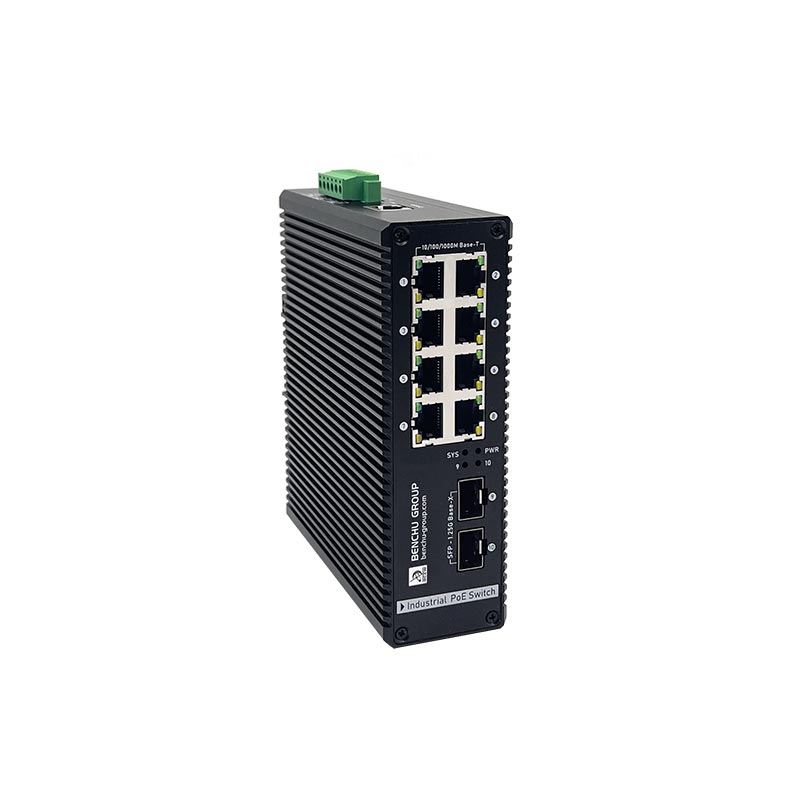Industrial PoE switches integrate Power over Ethernet (PoE) technology, enabling simultaneous data and power transmission over a single Ethernet cable. This technology delivers stable power to connected devices, significantly simplifying installation and reducing cabling complexity. Industrial-grade PoE switches are widely used to power network devices such as IP cameras, wireless access points (APs), and IP phones. By connecting these devices to the switch's PoE ports, they can operate without separate power adapters, streamlining deployment and enhancing reliability.

Technical Standards
Industrial PoE switches typically comply with IEEE 802.3af (Standard PoE) or 802.3at (PoE+) specifications. The 802.3at (PoE+) standard supports higher power delivery, with a maximum output of 30W per port. These international standards strictly define electrical parameters between Power Sourcing Equipment (PSE) and Powered Devices (PD), including:
--- Operating voltage range (44–57V DC)
--- Current limits
--- Power classification
Key Selection Criteria
When choosing an industrial PoE switch, consider the following factors:
1. Protocol Compliance – Ensure compatibility with the target device’s PoE standard.
2. Total Power Budget – Must meet the combined power demands of all connected devices.
3. Port Configuration – Select an appropriate number of PoE ports based on deployment needs.
4. Management Features – Prioritize models with remote power management, real-time monitoring, and intelligent power allocation.
By selecting the right PoE switch, businesses can enhance network reliability, reduce installation costs, and simplify maintenance.